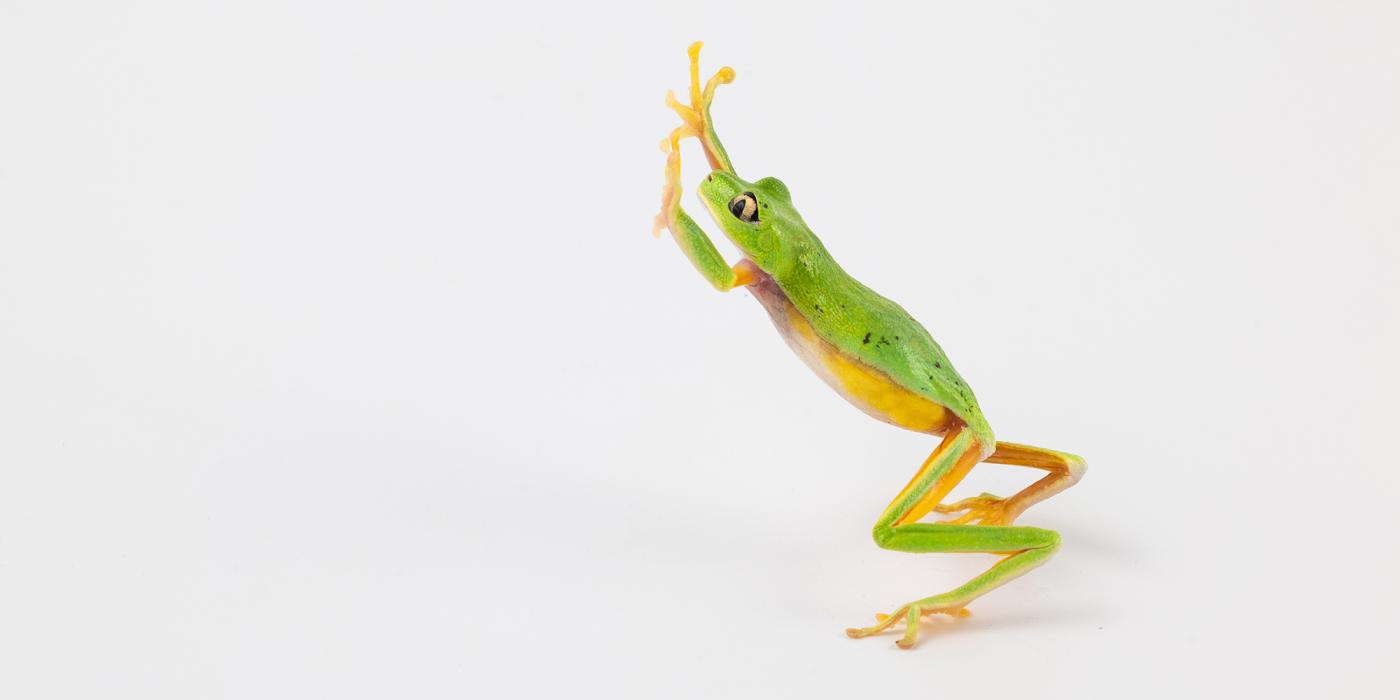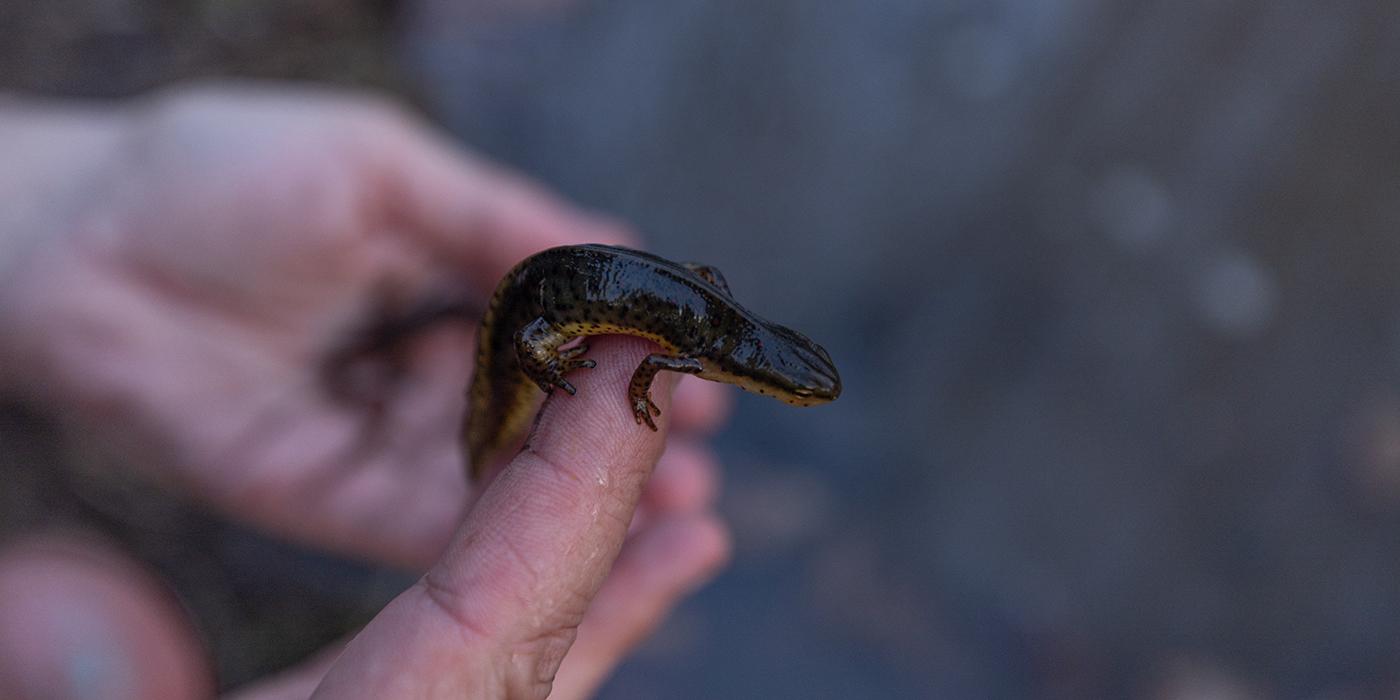Stripy, Slithery, Splendid: European Glass Lizard Hatchlings
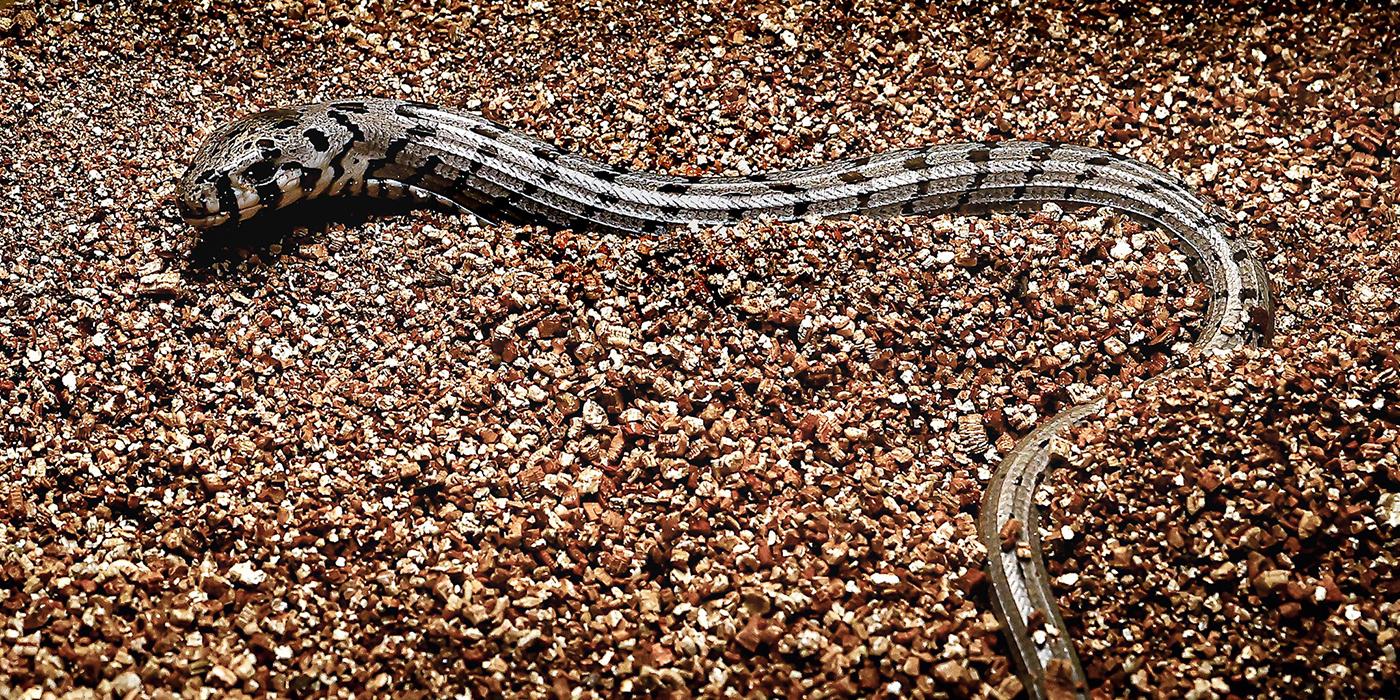
The last time European glass lizards hatched at Smithsonian’s National Zoo, I was in high school. The year was 1996, and the hatchings’ arrival was an exciting breakthrough for the Reptile Discovery Center team. Fast forward to today, and 25 years later those hatchlings are adults and—for the first time—have produced offspring of their own.

Glass lizards get their name from their tail, which breaks and shatters very easily—just like glass—as a defense mechanism. From far away, they look very much like snakes. They are legless and slither as they move. But look closely and you will see clear differences: they have eyelids (snakes do not), obvious internal ear openings and a thicker tongue with a stubby fork.
When it comes to breeding animals, there isn’t an exact recipe for success—it’s a pinch of this, a dash of that and a persistent keeper who dedicates their time to learning everything they can about a species. Reptile Discovery Center keeper Robin Saunders championed breeding glass lizards, combed through research and tried different methods to “set the mood” until she found one that worked.
Robin learned that it all starts with the glass lizards’ environment; specifically, the temperature of their habitats. As the weather cooled, Robin turned the thermostat down to mimic what the animals would experience in the wild. When temperatures rose in spring, she turned up the heat. Coming out of brumation—a hibernation-like state which allows these lizards to withstand extreme temperatures—seemed to spark our adults’ interest in breeding. She knew it was time to put them together and hope for the best.
It was clear that the male was ready to mate; the question was whether or not the female would be receptive. Robin waited for the opportune time and placed the male in her habitat. She watched their behaviors carefully, looking for any signs of aggression. Had it not been the right time, they could have fought and sustained injuries.
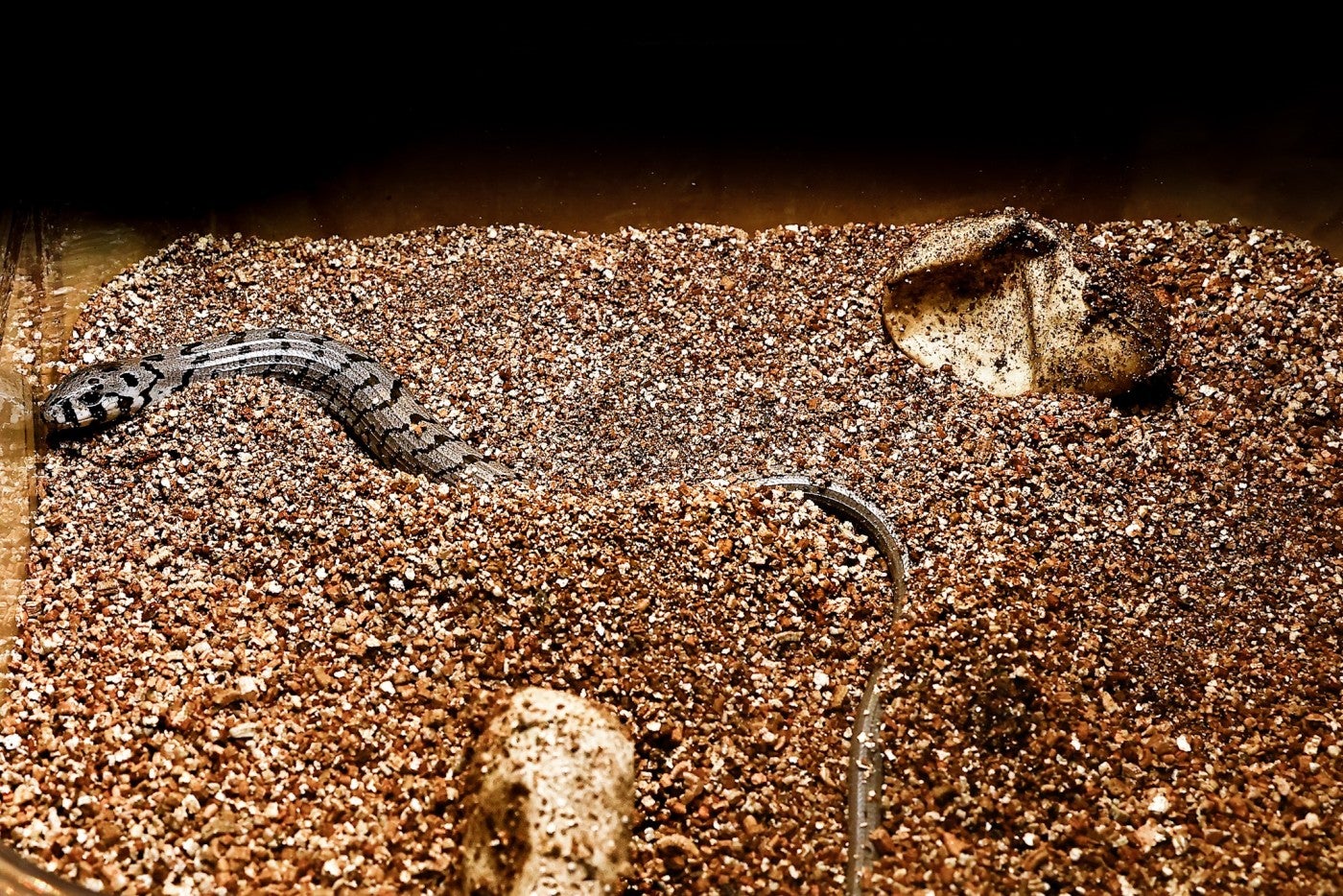
Because glass lizards don’t have arms, legs or hands, a male holds on to a female by placing his mouth on her neck and biting down. Potentially, he could injure her in doing so, but for the most part the marks he leaves are superficial. Once she sheds her skin, they are all gone.
Glass lizards are solitary in the wild, but they can be found together during breeding season. Robin introduced them when their behaviors indicated they we ready. Instead of removing the male quickly—as she had done in years past—she kept them together for an extended period.
Our team observed them closely every day for any behavioral changes. They also checked the female’s neck for any bite marks—a sure sign of a breeding attempt. Once Robin saw the marks, she removed the male and gave the female some alone time. If she did not lay eggs, Robin brought the male back to try again.
During our rounds April 28, we saw that the female dug a nest in the soil and was wrapped around two soft and leathery eggs, guarding them. She picked a good spot—the male’s preferred hideaway, too—but she would not let him come near it. Male glass lizards do not play a role in incubating or raising the offspring, so the female was not willing to share her space. We placed him back in his bachelor pad.
Glass lizard eggs are about the size of a ping pong ball, but their shape is more oval than round. Because this female laid infertile eggs for the past two years, our first step was to candle them (shine a light into the egg) and look for signs of embryonic development, such as blood vessels. To our delight, that’s exactly what we saw!
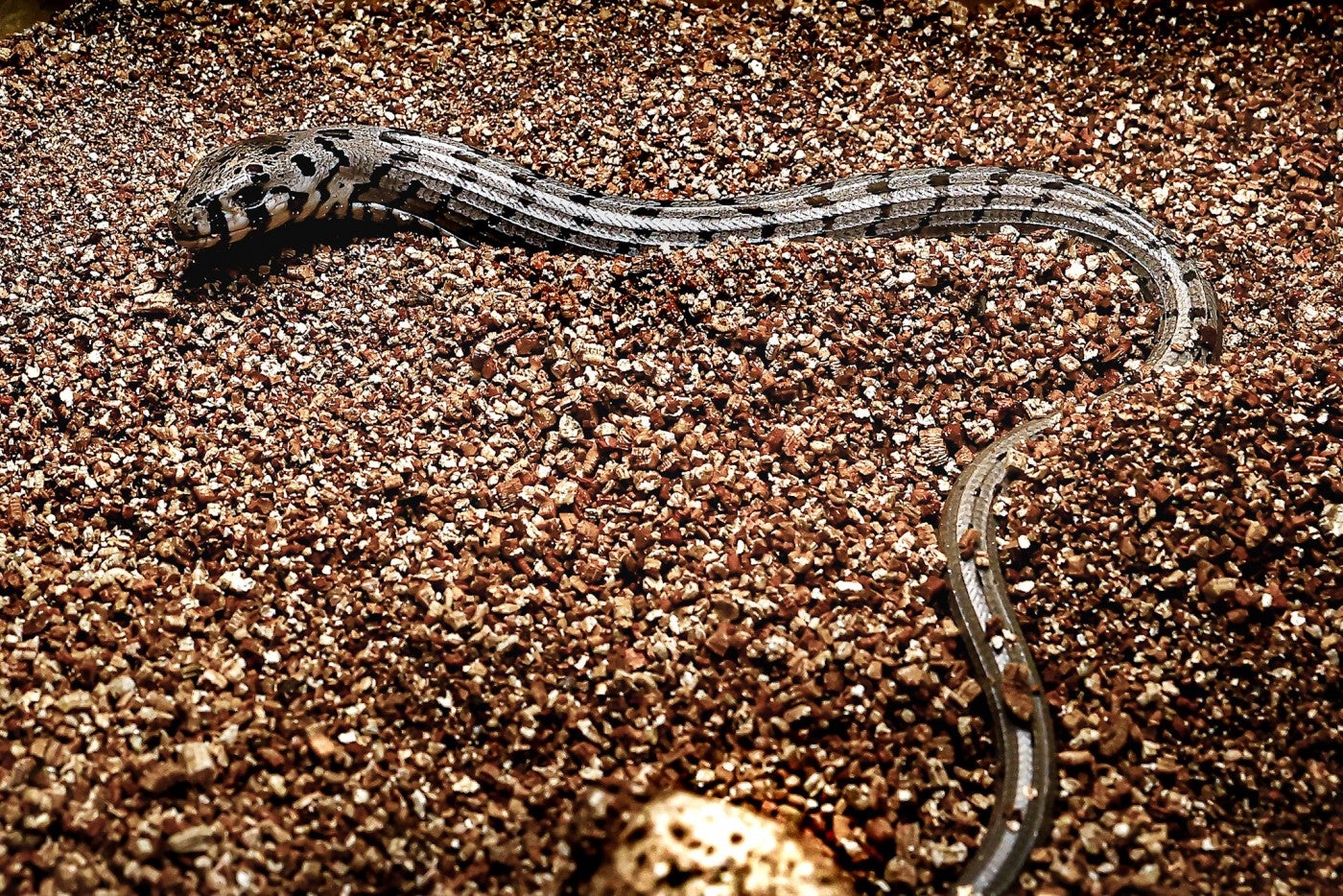
Because we wanted to give the eggs the best chance of fully developing, we kept them in an incubator and set the temperature and humidity similar to their mother’s nest. When the offspring hatched June 30, we were surprised at how striking they looked! Unlike their parents—which vary in color from pale yellow to dark brown—the hatchlings sport scales that are gray-and-black banded. They were also quite large and weighed about 9 grams. This is fairly sizeable considering that their mother weighs about 400 grams.
Once glass lizard offspring emerge from their shells, they are on their own. Both hatchlings and adults use their keen eyesight to detect any motion from potential prey. Our young glass lizards are fed the same prey as their parents—snails, slugs, worms and crickets—only in smaller-sized portions.
Another adult male is currently the only glass lizard ambassador on exhibit, but we hope to eventually introduce the hatchlings to visitors, too. For now, they remain behind the scenes while we monitor their diets and ensure they are making good gains.
Like many of the species at the Reptile Discovery Center, our European glass lizards’ wild cousins are declining rapidly. Their range is large—throughout eastern Europe and parts of Asia—but the rocky outcroppings where they live are being bulldozed for construction and development projects.
Glass lizards are such cool animals, and many people like to have them as pets. However, be cautious and do your research before you adopt one to ensure that your lizard comes from a reputable breeder, not from the wild. We can all do our part to help this species stick around for another quarter-century and beyond!
This article appears in the August 2021 issue of National Zoo News. Want to learn more about raising reptiles and amphibians? Check out Caring for Frogs: Stories From a Real-Life Zoo Guardian and Meet Our Cool Creep of Aldabra Tortoises!
